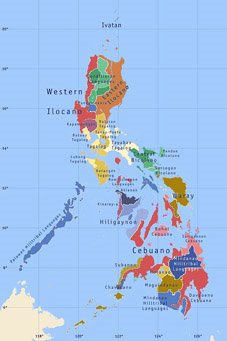[I am a columnist from Central Luzon Daily with a twice-in-a-week column called Urban Kamaru that tackles modern Kapampangan culture and sociology. Here is an article I wrote about the Kapampangan music video scene, which I believe may also prove applicable to other Philippine regions.]Budding Kapampangan musicians these days are more fortunate compared to the dreamy-eyed elders, who didn't enjoy the presence of local mass media that could increase their popularity. As I have been telling a chum, pursuing a music career these days doesn't require one to perform everytime (although that would certainly help). A musician, if busy in other matters, can sit pretty; his recorded songs, as long as they're melodically infectious, can spread like virus to the masses.
With the rise of local (local, as in Pampanga- or Central Luzon-based) television and cable stations, musicians, in partnership with filmmakers, have now a new means of propagating their works: through music videos.
For the record, music videos are what Filipinos passionately call MTVs. But MTV, which stands for Music Television, is a company name. To say “
Inalben ke itang MTV nang Michael Jackson king MYX” [I watched Michael Jackson's MTV] is nothing different from saying “
Sinali kung Colgate, itang Close Up,” [I bought some Colgate, the Close Up one] or “
Menalbe yang Popeye, itang Dragon Ball.” [I watched the Popeye that is Dragon Ball]
Dagdag ExposureIn a phone interview, I asked Ara Muna (singer of 'O Jo, Kaluguran Da Ka') regarding the importance of music videos because I heard he has plans of rendering a music video for his Tagalog-Kapampangan hit.
“
Nung kabud ka mu kasi king radyu, mapalyaring aburi de ing kanta mu, oneng bala mu 50% ya mu; e da ka balu itsura,” [People may like your songs via radio, but it seems to be only 50% because they don't see you or have a visual image of you] the comedienne claimed. “
Potang atin kang music video, ababalu da nung ninu ika; kayi potang kabit de ing lupa mu karing tarpaulin o nanu, tambing dang balu ring taung ika ita. Dagdag yang exposure para karing artist.” [When you have a music video, they know you more; when they put your face in tarps, they know at once that that is you. It's additional exposure for the artist.]
But music videos, while highlighting the musical artists, have more functions. Being a filmmaker myself, I believe music video making is another avenue for budding filmmakers, along with other people involved in the production of a film or video like editors, actors, and cinematographers, to practice their craft. When a music video wins an award, for example, in the annual MTV VMAs (Video Music Awards), it's not the just the victory of the artist; it's also the victory of the music video director.
The Upaya of Images[The Power of Images]
Music videos vary according to style, depending on the director or whoever is in charge with the concept. Some videos austerely show beauty shots of the singer/band in a certain location while some include a narrative in the video.
Music videos are actually like TV commercials—a fact which a lot of music video directors tend to neglect.
“I know some beautiful songs destroyed by their badly done music videos,” says Sigfreid Barros-Sanchez, a Quezon City-based music video and indie film director whose directorial works include the music video/s of Parokya Ni Edgar ('Gitara'), Hale ('Tollgate,' 'The Day You Said Goodnight'), Kyla ('Til They Take My Heart Away'), Sugarfree ('Hari Ng Sablay,' co-directed with another music video director, Topel Lee) and Shamrock ('Okey Lang'). “And I know some good music videos which were destroyed by crappy songs,” he continues.
The power of music videos can even transcend linguistic barriers. In radio, when one hears a song in an unfamiliar language, he is most likely to reject it, simply because he cannot understand it (except if the listener knows how to enjoy music in spite of the language). Music videos on the other hand can make a viewer tune in and watch the video while listening to the song. Even if the song is in an unknown language, the combination of the images, the narrative, and the emotional impact of the music can act as a universal language.
Barros-Sanchez tells his experience: “There's one music video I watched ['Because I'm A Girl' by Kiss] the lyrics of which I don't even understand because it's in Korean.
Pero sobrang lakas ng tama sa akin at tuwing napapanood ko, may mga panahong iniiyakan ko pa rin.”

The music video of 'Because I'm A Girl' is about a lady accidentally blinded with chemicals in the dark room of a certain photographer guy. Fortunately, someone donated eyes to her, but when she got her vision back, the photographer can no longer be found, only to find out a few years later in a park that it's the photographer who donated his eyes to her.
“Very sad,” Barros-Sanchez remarks. “I love that in videos.
Yung may kurot. Yung may puso.”
Problems in Pinoy Music Videos“
Makikita mo naman sa video pa lang kung pinagkaperahan ng director,” Barros-Sanchez laments. “First of all, the camera used is bad. Second, the location is ugly;
ni walang art or architectural thing
na magpapabuhay man lang ng interes mo. Third, no effort was allotted to the production design and cinematography.
Hindi kinarir kahit maliit ang budget. Kurtina at halaman (madalas palmera plants) at throw pillows at bed sheets lang, tapos na... Alam mong dalawang oras lang, tapos na ang shooting.”
If one will watch his favorite music channel, he will find a vast number of badly done local music videos, the reasons for which vary. There includes the lack of artistic vision of the director, lack of originality of the concept maker, and the pretentious personality of some music video directors, especially aggressive, budding ones.
Barros-Sanchez expounds, “There's always a new guy around who is willing to do his first music video
kahit mag-abono siya para lamang sa demo reel niya at konting pampayabang sa pamilya at barkada.”
“
Ngayon, baratan na talaga sa budget. Lokohan na, kaya mapapansin rin lately na the videos are suffering. Medyo pangit na ang kalidad at dahil doon nag-dwindle na rin interes ng mga tao na panoorin sila. Naumay na. Wala na kasi ng bagong ipinapakita.”
“
Masyado nang naging sikat ang music videos lalo na sa dekadang ito,” the director comments. “
Everyone wants a share of the pie, even just the crumbs that fall on the floor. Nawawala na tuloy yung art. Too many cooks spoiling what was once a special brew.”
The Infant Pool of K-Music VideosYes, there are Kapampangan music videos already, the number of which could either mean that Kapampangan music video making is emerging, or that Kapampangan music video making is bound to not flourish.
Mekikuan, ada pen. [A miscarriage, so they say]
There are two non-commercial, non-live Kapampangan music videos. One is the Pampanga Tourism video with song by ArtiSta. Rita and Mon David ('
Malaus Ka Pampanga') and the other is the San Fernando '
Kaluguran Da Ka' music video. My concern though would be more on Kapampangan commercial, non-live music videos by Kapampangan artists, the total number of which would be three. Yes, three.
Atlu.
The first music video I have seen (through YouTube) would have to be Harvey Quiwa's '
Ika Mu Ing Tune Para Kaku,' the second placer in the first ever Kapampangan songwriting and pop music contest by ASLAG Kapampangan last 2007. Directed by Emil De Jesus and conceptualized by the singer himself, the video is a simple showcase of the artist singing the love song in a green and grassy field with the indigo silhouette of Bunduk Arayat in the background. Intercut with a mini-plot involving a romantic couple (where Quiwa is the leading man) in a subdivision, the video is currently garnering around 15,000 views in YouTube, mostly from Kapampangans.
The second and third music videos would be those of the opening and closing theme songs of
Kalam, the upcoming Kapampangan telenovela of Infomax. 8 and Kalalangan Kamaru.

 Filmmakers and Musicians
Filmmakers and MusiciansKapampangan musicians and Kapampangan filmmakers can grow hand in hand by supporting one another, a phenomenon which I have witnessed as a student in the University of the Philippines Diliman College of Mass Communication—indie bands and indie film directors working and celebrating their art together.
I call on Kapampangan Masscomm students to be observant of the music videos they see on TV and to take advantage of the Internet when it comes to studying. While observation can help you get familiarized with the popular standards and styles of music video direction and conceptualization, remember that you should not be content with copying or perfecting the style of another. As a Kapampangan, you are obliged to bring pride to your race—by coming up with an original style in the creation of music videos which other peoples can look up to someday.
Let's not forget that as Kapampangans, we should live up to the tradition of excellence which we love to take pride in. Let's keep striving for more groundbreaking Kapampangan music, partnered with breath-taking and non-mediocre Kapampangan music videos, as every music video we make is an “advertisement” of the Kapampangan people. To spawn a mediocre music video is either a learning stage for the budding filmmaker, or simply a form of neglect to the subconscious consequences an ugly piece can have to the Kapampangan image.
May Kapampangan music and music videos bloom in the future. Young Kapampangan filmmaking enthusiasts are invited to get acquainted with the writer by texting 09186992459. Kalalangan Kamaru has plans of developing young Kapampangan directors.
 Hip hop and band music are often the primordial musical genres of non-dominant pop cultures because they are theoretically easier to make than pop music, which requires great technology, marketing, bureaucracy, and funds (such as Jay Chou of Taiwan and Britney Spears of USA).
Hip hop and band music are often the primordial musical genres of non-dominant pop cultures because they are theoretically easier to make than pop music, which requires great technology, marketing, bureaucracy, and funds (such as Jay Chou of Taiwan and Britney Spears of USA). The album of La Familia titled "Ikaduha Nga Sumat" has 14 tracks:
The album of La Familia titled "Ikaduha Nga Sumat" has 14 tracks:















